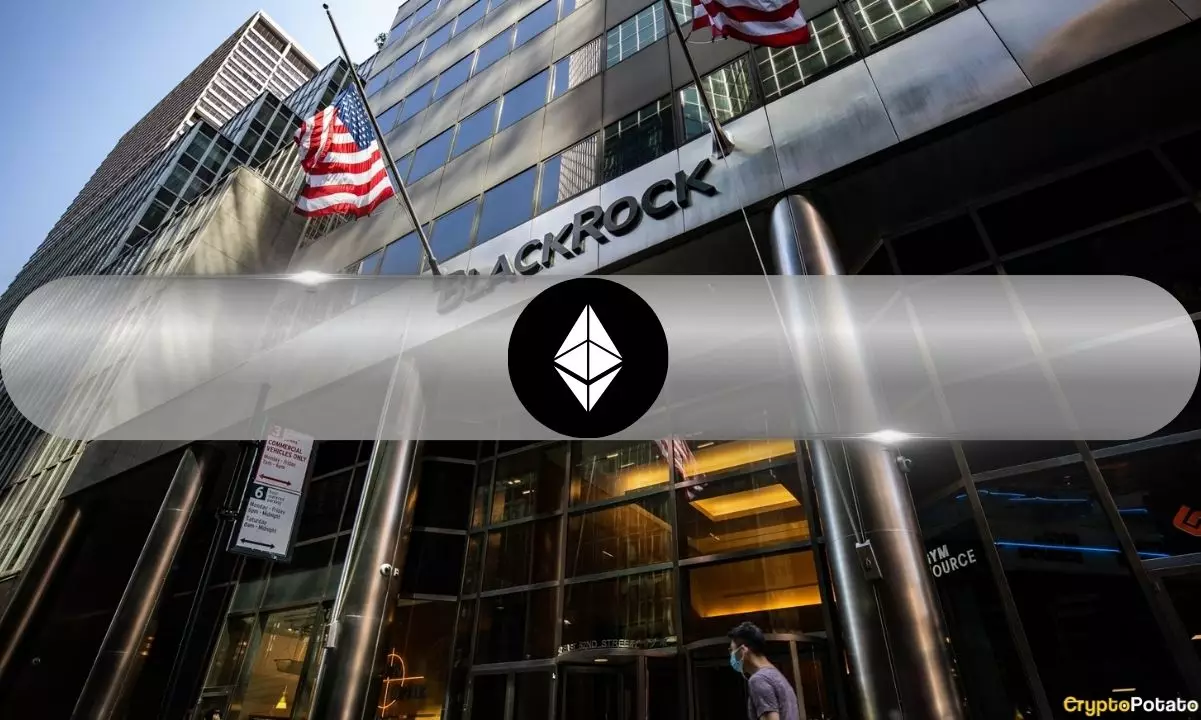In a bold move that could redefine entire investment paradigms, BlackRock has announced plans to tokenize its $150 billion Treasury Trust market fund. This isn’t just a small experiment; it’s a strategic maneuver that positions Ethereum at the forefront of financial technology. As former Ethereum developer Eric Connor pointed out, this development marks “the biggest real-world asset flow to Ethereum yet,” and that statement cannot be overstated. Tokenization, once a novel concept limited to niche segments of the cryptocurrency space, is now being embraced by one of the world’s largest asset managers, indicating a seismic shift in traditional finance.
This embrace of blockchain technology highlights an uncomfortable truth for many skeptics: the revolution isn’t being postponed; it’s actively underway. With BlackRock’s CEO, Larry Fink, emphasizing that “tokenization will revolutionize investing,” the tide is clearly turning. Mainstream adoption by financial institutions not only enhances Ethereum’s credibility but sets the stage for a new era where transactions are instantaneous, enabling unprecedented liquidity in markets that have historically been sluggish and bureaucratic.
Investment Stability Meets Blockchain Innovation
The core principle behind BlackRock’s Treasury Trust Fund is preserving liquidity while generating stable returns. By leveraging Ethereum’s blockchain, they are essentially fusing traditional financial principles with cutting-edge technology. This hybrid model not only appeases conservative investors wary of volatility but also attracts tech-savvy individuals eager to embrace innovation. As Ethereum’s traction continues to grow within institutional circles, we are witnessing a burgeoning acceptance of digital assets as mechanisms for traditional investments.
The choice of BNY Mellon as the custodian for these tokenized DLT shares underscores a growing recognition among financial giants that blockchain can signify tangible and secure asset ownership. This is not merely about adopting a trendy technology; it’s about enhancing transparency and security in an era where trust in financial institutions is at an all-time low. If BlackRock’s model becomes the standard, it could prompt other asset managers to follow suit, further solidifying Ethereum’s dominance as a preferred blockchain for real-world asset tokenization.
Ethereum’s Market Position: Undervalued Potential
Despite these robust developments, Ethereum’s current market performance seems disconnected from its promising fundamentals. Trading below the $1,800 mark, ETH remains at bear market lows, yet there’s an underlying sense among analysts that these conditions might represent an opportunity rather than a setback. As outlined by “CryptoGoos,” Ethereum is deemed “extremely undervalued,” especially with institutional players showing renewed interest in acquiring cut-price Ether.
The conversation around Ethereum’s price is layered with complexity. Although trading numbers reveal a stark contrast from 2021 highs—63% below its peak—what cannot be ignored is the massive groundwork being laid with developments like BlackRock’s Treasury Trust Fund. With a 56% market dominance in the area of real-world asset tokenization, Ethereum stands not only to reclaim lost value but to emerge even stronger as new institutional players continue to flock to its ecosystem.
Future Prospects: A Paradigm Shift in Finance
Larry Fink’s assertion that “markets wouldn’t need to close” and that settlement delays could be eradicated aligns perfectly with the economic landscape that is becoming increasingly impatient for efficiency. If tokenization of assets leads to transactions being settled within seconds, the repercussions could be monumental. It could empower retail investors, disrupt traditional brokerage models, and ultimately foster an environment where capital flows seamlessly, enhancing overall economic growth.
Yet, while the excitement is palpable, a certain level of skepticism remains warranted. The tokenization trend is at the intersection of regulation, security, and market stability. As financial giants tread cautiously, the success of Ethereum may depend as much on regulatory clarity as it does on market adoption.
The combination of institutional backing, technological innovation, and a fundamentally strong ecosystem suggests that while Ethereum may currently languish in price, its future is lit with possibilities. For those ready to embrace this blockchain-based evolution, there are rewards to be had—provided they can weather the inevitable volatility that comes along with it. The battle for investing supremacy has only just begun, and Ethereum’s role is growing increasingly significant.














